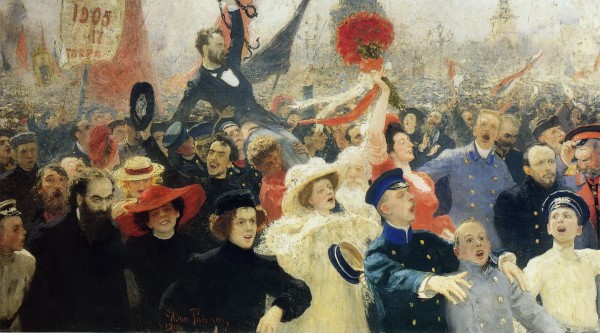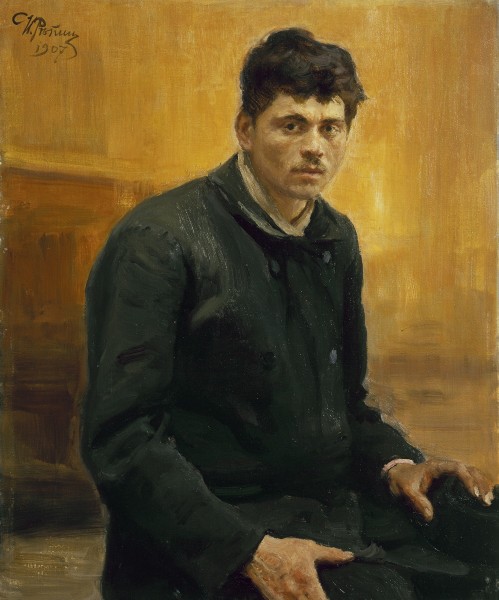The artist is Repin

By the beginning of the 20th century, the Russian Empire was an absolute monarchy and was one of the five largest industrial powers in the world. However, almost all layers of Russian society were dissatisfied with their position: the bourgeoisie and the intelligentsia wished the constitution and civil freedoms, the peasants – the landlord land, workers – worthy working conditions and raising wages. The last straw was the defeat in the Russo-Japanese War. On January 9, 1905, thousands of demonstrators led by the leader of the trade union movement, Priest George Gapon, who were shot by the troops, headed for the Winter Palace in St. Petersburg with a petition. “Bloody Sunday” laid the foundation for the unrest that grew up by autumn into an all -Russian political strike. This forced Nicholas II to publish a manifesto on October 17/30, which granted civil rights and freedoms, as well as a parliament – a state Duma with legislative functions. Soon the Stolypin land reform began. The country has entered the new phase of its political development. (WITH. TO.) Electronic catalog “Heroes and villains of Russian history”. SPb, 2010. WITH. 336.
Repin admires Alexander Glazunov, Nikolai Rimsky-Korsakov and other composers, who were excluded from the professors of the St. Petersburg Conservatory for the sympathy of the revolutionary part of the students and the performance in the press. Together with 113 artists, he signs a statement demanding the government “immediate and complete change in the state system by calling for the legislative and administrative work of freely selected representatives from the people”.
On October 17, 1905, in the midst of the All -Russian October political strike, the “Manifesto on the improvement of state order” was published. In it, Nicholas II promised to give the people the “unshakable foundations of civil freedom”. This caused a violent reaction in society. Repin with delight took the manifesto on October 17: “And now the dam is broken,” he writes, “now not to stop this force of the accumulated river,” she poured out!””
“October 17, 1905” – from few works of fine art, adequately expressing emotions that overwhelmed contemporaries. According to c. IN. Rozanova, Repin very accurately conveyed in his work “Shrovetide of the Russian Revolution, a carnival of it, full of madness, flowers and bliss”. The artist himself explained that his picture depicts “mainly students, careers, professors and workers, with red flags, enthusiastic; with singing revolutionary songs. In the foreground, they raised on the shoulders of an amnestered and many thousandth crowd move along the area of a large city in a general glee ecstasy ”. Among the demonstrators, Repin also captured representatives of the democratic intelligentsia, which one way or another brought up the offensive of this day: artistic and musical criticism in. IN. Stasov, philologist and teacher m. IN. Prakhov, who died back in 1879, a historian of literature and a bibliographer from. A. Vengerova, actress L. E. Yavorskaya. (WITH. TO.) Electronic catalog “Heroes and villains of Russian history”. SPb, 2010. WITH. 336.
However, in post -revolutionary Russia, Repin’s painting “October 17, 1905” was not just almost forgotten. Critics and art historians for a long time deleted her from the artist’s heritage. Such Repin did not suit them. They preferred to leave him in the memory of the descendants only by the Wanderer, the author of socially pointed stories about Russia of the second half of the 19th century. The realities of the 20th century, equally sincerely experienced by Repin, were presented to the public as a senile decline, which did not correspond to the truth at all. In the 1900s, Repin did not change as an artist who always searched in the art of conformity of life. As in the 1870s, when he wrote “Burlakov on the Volga”, a hymn to a man of labor, and at the beginning of the 20th century he remains faithful to his understanding of the purpose of the artist.


